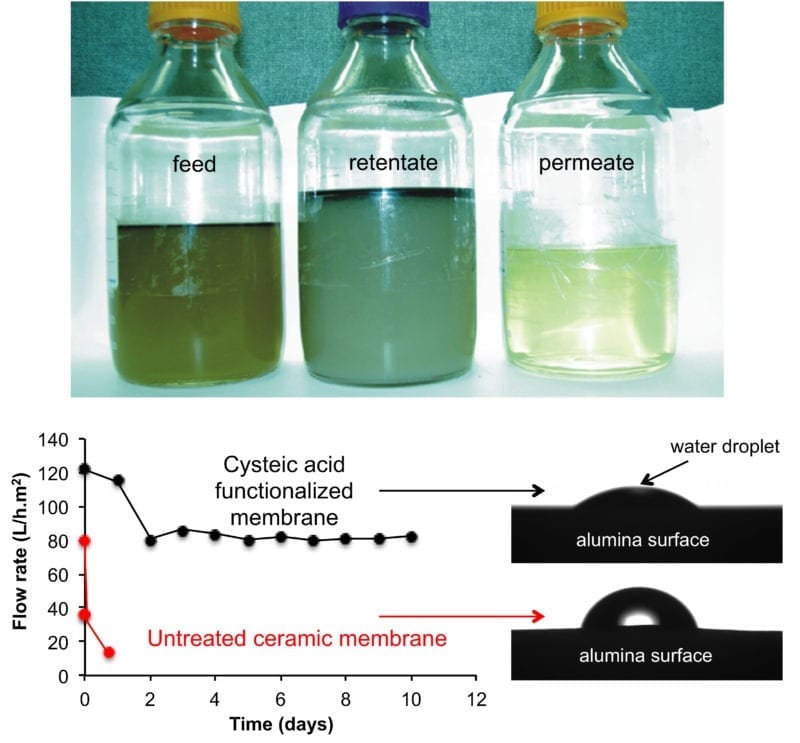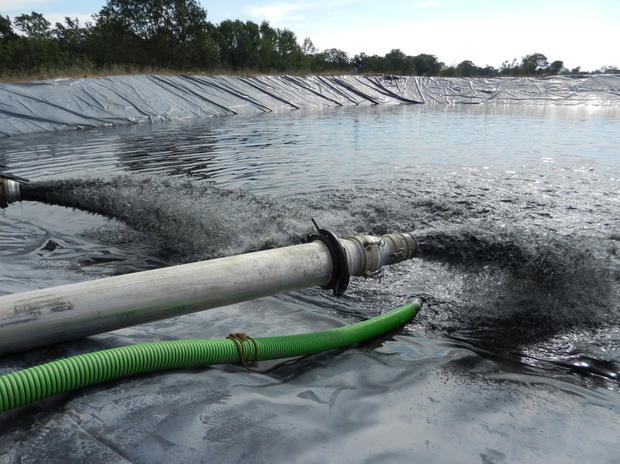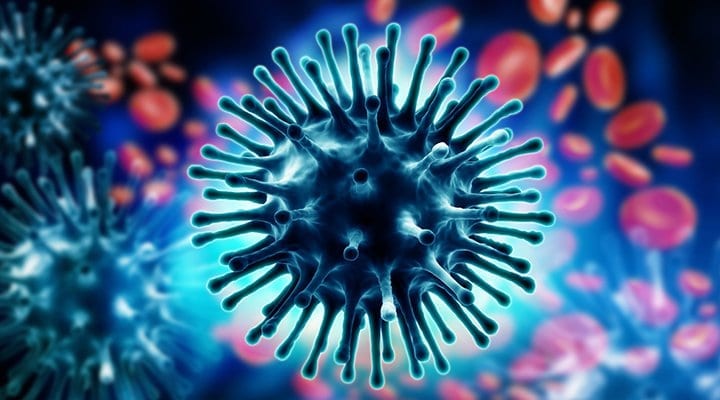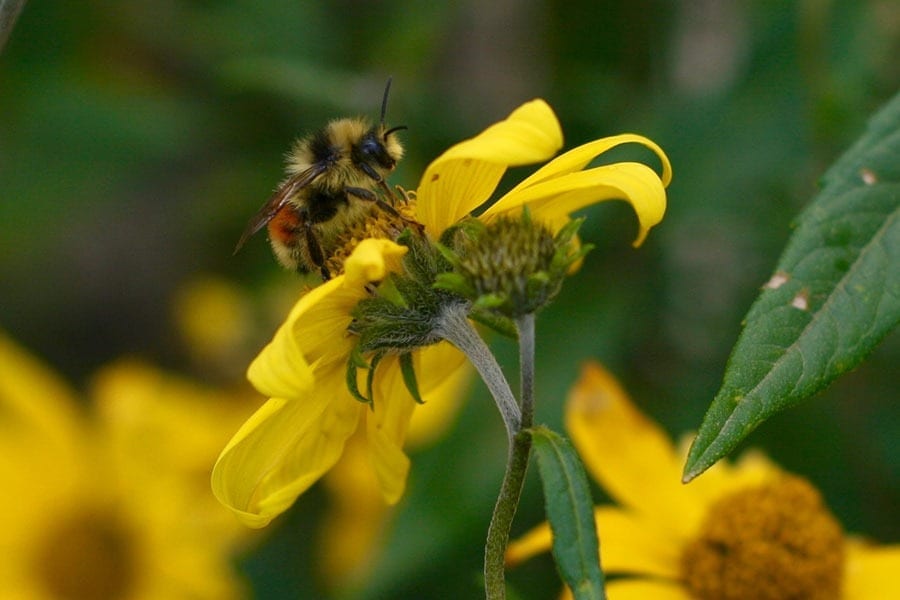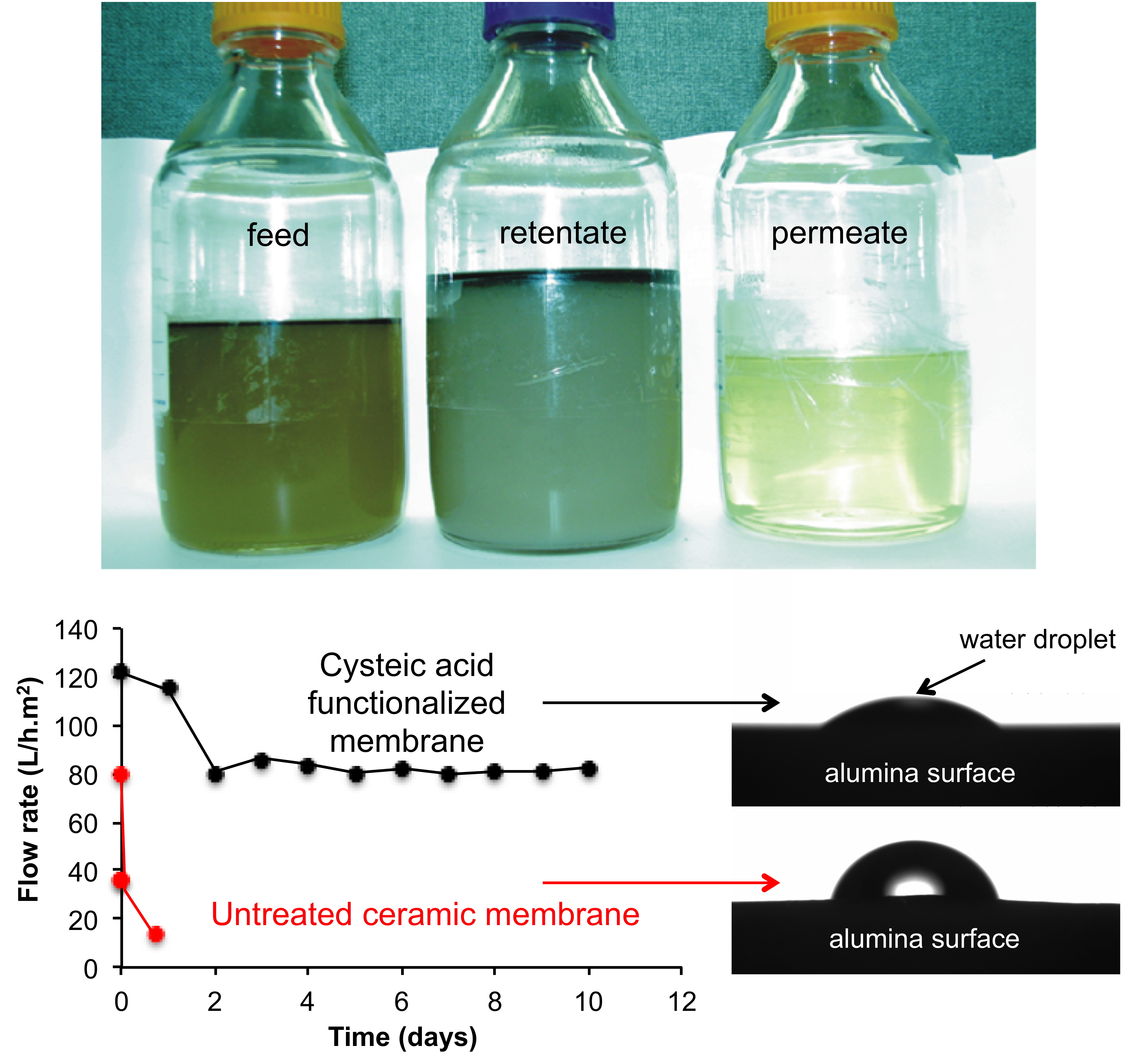
Rice scientists lead production of superhydrophilic membrane to clean fluids for reuse
A new filter produced by Rice University scientists has proven able to remove more than 90 percent of hydrocarbons, bacteria and particulates from contaminated water produced by hydraulic fracturing (fracking) operations at shale oil and gas wells.
The work by Rice chemist Andrew Barron and his colleagues turns a ceramic membrane with microscale pores into a superhydrophilic filter that “essentially eliminates” the common problem of fouling.
The researchers determined one pass through the membrane should clean contaminated water enough for reuse at a well, significantly cutting the amount that has to be stored or transported.
The work is reported in Nature’s open-access Scientific Reports.
The filters keep emulsified hydrocarbons from passing through the material’s ionically charged pores, which are about one-fifth of a micron wide, small enough that other contaminants cannot pass through. The charge attracts a thin layer of water that adheres to the entire surface of the filter to repel globules of oil and other hydrocarbons and keep it from clogging.
A hydraulically fractured well uses more than 5 million gallons of water on average, of which only 10 to 15 percent is recovered during the flowback stage. “This makes it very important to be able to re-use this water,” Barron said.
Not every type of filter reliably removes every type of contaminant, he said.
Solubilized hydrocarbon molecules slip right through microfilters designed to remove bacteria. Natural organic matter, like sugars from guar gum used to make fracking fluids more viscous, require ultra– or nanofiltration, but those foul easily, especially from hydrocarbons that emulsify into globules. A multistage filter that could remove all the contaminants isn’t practical due to cost and the energy it would consume.
“Frac water and produced waters represent a significant challenge on a technical level,” Barron said. “If you use a membrane with pores small enough to separate, they foul, and this renders the membrane useless.
“In our case, the superhydrophilic treatment results in an increased flux (flow) of water through the membrane and inhibits any hydrophobic material – such as oil – from passing through. The difference in solubility of the contaminants thus works to allow for separation of molecules that should in theory pass through the membrane.”
Barron and his colleagues used cysteic acid to modify the surface of an alumina-based ceramic membrane, making it superhydrophilic, or extremely attracted to water. The superhydrophilic surface has a contact angle of 5 degrees. (A contact angle of 0 degrees would be a puddle.)
The acid covered not only the surface but also the inside of the pores, and that kept particulates from sticking to them and fouling the filter.
In tests with fracking flowback or produced water that contained guar gum, the alumna membrane showed a slow initial decrease in flux — a measure of the flow of mass through a material — but it stabilized for the duration of lab tests. Untreated membranes showed a dramatic decrease within 18 hours.
The researchers theorized the initial decrease in flow through the ceramics was due to purging of air from the pores, after which the superhydrophilic pores trapped the thin layer of water that prevented fouling.
“This membrane doesn’t foul, so it lasts,” Barron said. “It requires lower operating pressures, so you need a smaller pump that consumes less electricity. And that’s all better for the environment.”
Learn more: Filter may be a match for fracking water
The Latest on: Fracking
[google_news title=”” keyword=”Mengla virus” num_posts=”10″ blurb_length=”0″ show_thumb=”left”]
via Google News
The Latest on: Fracking
- The Covid-19 Pandemicon May 15, 2024 at 10:05 am
With the acute phase of the Covid-19 pandemic fading even as the coronavirus persists and evolves, a new normal is taking shape around the world. The decision came after a scorching hearing in ...
- Best Antivirus Software for 2024on May 14, 2024 at 2:00 pm
Clifford is a managing editor at CNET, where he leads How-To coverage. He spent a handful of years at Peachpit Press, editing books on everything from the first iPhone to Python. He also worked at ...
- What to know about the bird flu outbreak in the US after virus fragments found in milk sampleson April 25, 2024 at 8:38 am
Several dairy cows have been infected, resulting in milk samples showing inactive remnants of the virus, and one human case has been confirmed. Health officials say the food supply is safe and the ...
- World's chocolate supply threatened by devastating viruson April 22, 2024 at 4:59 pm
A rapidly spreading virus threatens the health of the cacao tree and the dried seeds from which chocolate is made, jeopardizing the global supply of the world's most popular treat. Farmers can ...
- Measles outbreak in Chicago: What to know about the viruson March 27, 2024 at 9:50 am
Though most vaccinated people have close to zero chance of contracting the virus, here’s what to know about the disease. Yes, they do. In fact, measles, which was considered eliminated in the ...
- New study shows virus-like particle can effectively 'shock and kill' latent HIV reservoiron March 26, 2024 at 7:29 am
In the study published in the journal Emerging Microbes and Infections, the team demonstrated that the patented therapeutic candidate, an HIV-virus-like-particle (HLP), is 100 times more effective ...
- Inside the Coronaviruson February 3, 2024 at 9:56 am
We show how the immune system would normally attempt to neutralize virus particles and how CoV-2 can block that effort. We explain some of the virus's surprising abilities, such as its capacity to ...
- Vaccination from the Misinformation Viruson August 3, 2021 at 5:22 pm
Adjust the colors to reduce glare and give your eyes a break. Use one of the services below to sign in to PBS: You've just tried to add this video to My List. But first, we need you to sign in to ...
- Genetics of the Influenza Viruson September 9, 2019 at 1:44 pm
Reid, A. H., & Tautenberger, J. K. The origin of the 1918 pandemic influenza virus: A continuing enigma. Journal of General Virology 84, 2285–2292 (2003) ...
- Mac Virus Scan: How to protect your Mac from malwareon May 27, 2015 at 11:56 am
Initiating a virus scan is an easy process that usually begins with the user clicking a Scan or Smart Scan button. Expect the scan to take a while if there is a lot of data on your Mac.
via Bing News








